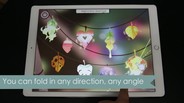Qinoto Mac OS
Requirements¶
Officially, the operating system that was available on that Mac at the time that you bought it is the oldest version of macOS that can run on that Mac. It's likely that an older OS won't include. Detail Step-by-Step video explaining how to play Qinoto: http://www.qinoto.com.
XCode 8.2 (macOS 10.11), 8.3.3 (macOS 10.12), 9 (macOS 10.13), 10.1 (macOS 10.14)
sphinxpackage for the documentation (optional).Depending on your OS, the following dependencies might also be required:
libgl-dev,python-dev,python-distutils, andpython-setuptools.
Building from source¶
Creating a virtual environment¶
The venv module allows you to create a local, user-writeable copy of a python environment intowhich arbitrary modules can be installed and which can be removed after use:
will create and use a new virtual environment, which is indicated by the command prompt changing.
Setting up CLANG¶
Qinoto Mac Os Catalina
If you don’t have libclang already in your system, you can download from the Qt servers:
Extract the files, and leave it on any desired path, and then set these two requiredenvironment variables:
Getting PySide¶
Cloning the official repository can be done by:

Checking out the version that we want to build, for example, 6.0:
Note
Keep in mind you need to use the same version as your Qt installation
Building PySide¶
Check your Qt installation path, to specifically use that version of qmake to build PySide.for example, /opt/Qt/6.0.0/gcc_64/bin/qmake.
Build can take a few minutes, so it is recommended to use more than one CPU core:
Installing PySide¶
To install on the current directory, just run:
Test installation¶
You can execute one of the examples to verify the process is properly working.Remember to properly set the environment variables for Qt and PySide:
© 2021 The Qt Company Ltd. Documentation contributions included herein are the copyrights of their respective owners. The documentation provided herein is licensed under the terms of the GNU Free Documentation License version 1.3 as published by the Free Software Foundation. Qt and respective logos are trademarks of The Qt Company Ltd. in Finland and/or other countries worldwide. All other trademarks are property of their respective owners.
Is your Mac up to date with the latest version of the Mac operating system? Is it using the version required by a product that you want to use with your Mac? Which versions are earlier (older) or later (newer, more recent)? To find out, learn which version is installed now.
If your macOS isn't up to date, you may be able to update to a later version.
Which macOS version is installed?

From the Apple menu in the corner of your screen, choose About This Mac. You should see the macOS name, such as macOS Big Sur, followed by its version number. If you need to know the build number as well, click the version number to see it.
Which macOS version is the latest?
These are all Mac operating systems, starting with the most recent. When a major new macOS is released, it gets a new name, such as macOS Big Sur. As updates that change the macOS version number become available, this article is updated to show the latest version of that macOS.
If your Mac is using an earlier version of any Mac operating system, you should install the latest Apple software updates, which can include important security updates and updates for the apps that are installed by macOS, such as Safari, Books, Messages, Mail, Music, Calendar, and Photos.
Qinoto Mac Os 11
| macOS | Latest version |
|---|---|
| macOS Big Sur | 11.3 |
| macOS Catalina | 10.15.7 |
| macOS Mojave | 10.14.6 |
| macOS High Sierra | 10.13.6 |
| macOS Sierra | 10.12.6 |
| OS X El Capitan | 10.11.6 |
| OS X Yosemite | 10.10.5 |
| OS X Mavericks | 10.9.5 |
| OS X Mountain Lion | 10.8.5 |
| OS X Lion | 10.7.5 |
| Mac OS X Snow Leopard | 10.6.8 |
| Mac OS X Leopard | 10.5.8 |
| Mac OS X Tiger | 10.4.11 |
| Mac OS X Panther | 10.3.9 |
| Mac OS X Jaguar | 10.2.8 |
| Mac OS X Puma | 10.1.5 |
| Mac OS X Cheetah | 10.0.4 |